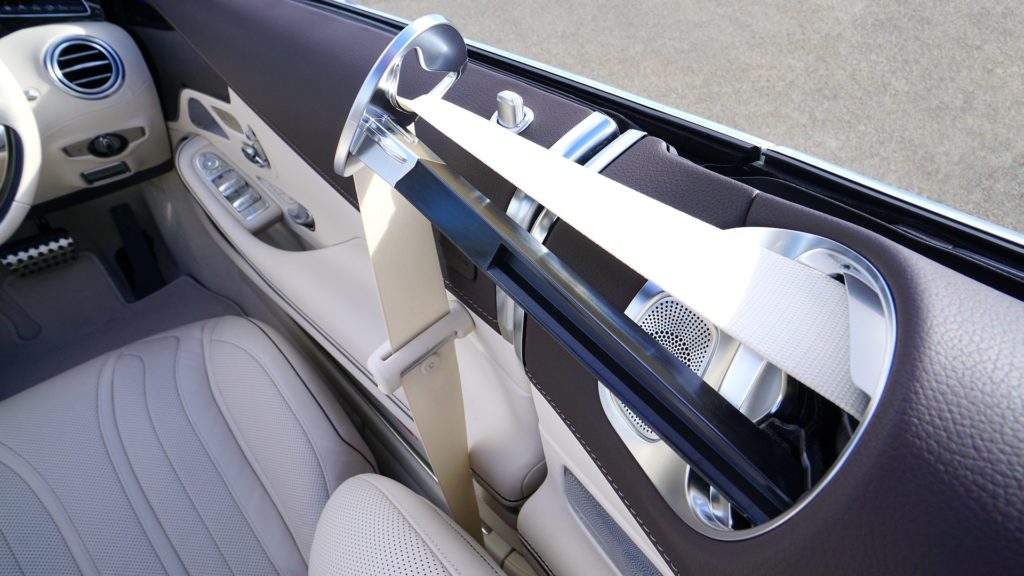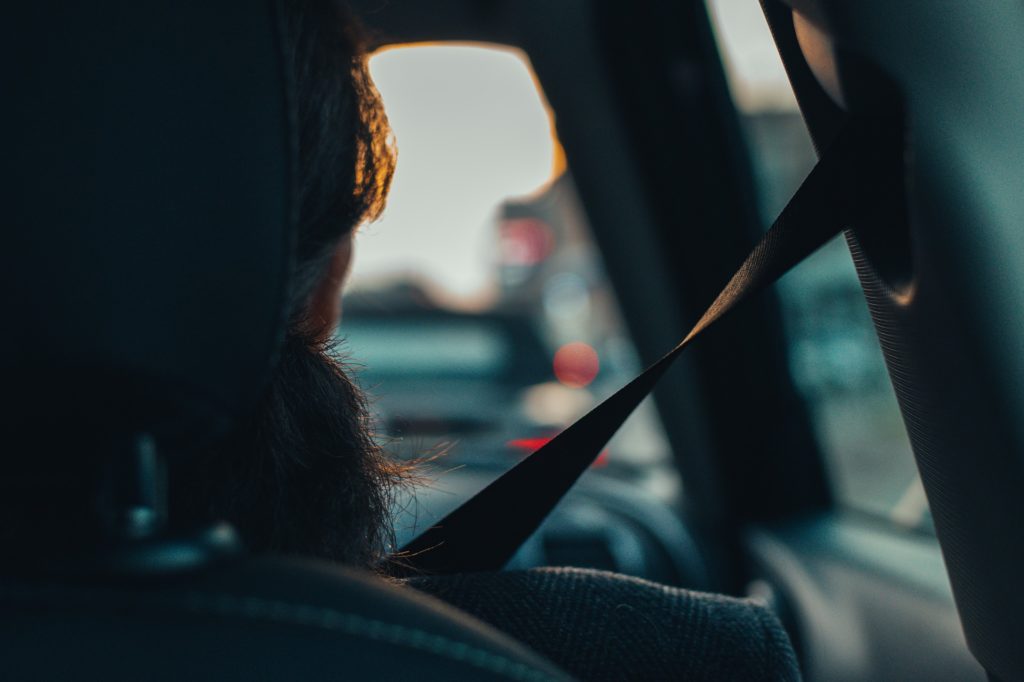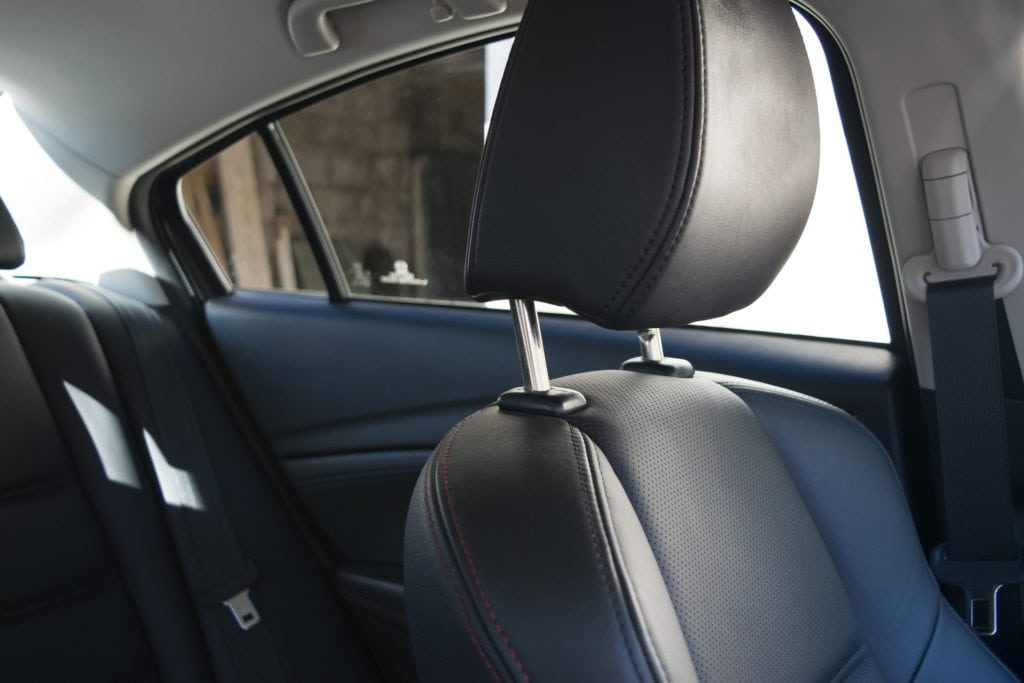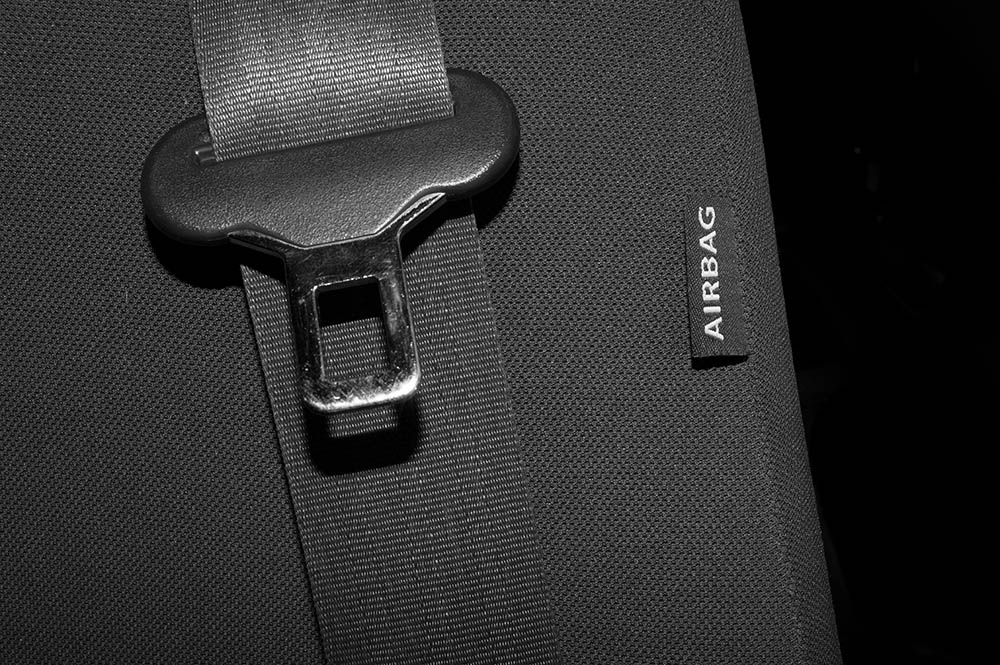How Do Seatbelts Work? Pros, Cons, Types, & FAQ
-
Pete Ortiz
- Last updated:

Many of us grew up in an era when cars were not required to have seatbelts, but how many injuries in motor vehicle accidents have been prevented due to such a small device? Passengers and drivers without seatbelts are about 30 times more likely to be ejected from their vehicle in the event of a crash. We’ll go over how seatbelts work, how to wear them properly, and how to determine if your seatbelt is in proper working condition to keep you safe.
Seatbelt Parts
The basic parts of a seatbelt include the webbing (the belt itself), latch plate (buckle insert), buckle, retractor (where it attaches to the seat or floor), and the pillar loop (where the seatbelt is attached to the seat or the ceiling). The most important mechanism of the whole seatbelt is the retractor. It allows the seatbelt to be pulled out and tightens and restrains the belt in the right circumstances.

Seatbelt Retractor
Inside the retractor, a spiral spring is centered on a rotating shaft, and the webbing is attached to the shaft. When the webbing is pulled out as the passenger fastens the seatbelt, the shaft turns, and the gradual tightening of the spiral spring prevents extra slack from being pulled too easily. However, this does not hold the passenger in place in the event of a crash.
Seatbelt Locking Mechanisms
So, how does the device keep the passenger in place? A ball and hinge are placed on the retractor, on the opposite side of the spiral spring, and attached to the retractor shaft with a sprocket. The ball holds the hinge away from the freely rotating sprocket. In the event of a sudden deceleration, because of the inertia, the ball lurches forward, thus allowing the hinge to engage the sprocket. This prevents the webbing from retracting and secures the passenger in the seat during a crash.
Most seatbelts today also have a locking mechanism in addition to the hinge and sprocket setup. Why are there two mechanisms? The locking mechanism acts as a failsafe for the ball and hinge. Should the hinge snap or break from overuse, the lock will engage.

Torsion Bar
Newer seatbelts have a torsion bar in place of the retractor shaft. The bar detects when the pull of the webbing has reached a critical load; the seatbelt then loosens just slightly. This helps prevent injuries (even internal organ injuries) to the passenger.
Pre-Tensioner
Some seatbelts are also equipped with a pre-tensioner, which is a device that can sense the activity of the brake pedal. It engages the retractor to keep the passenger as close to the seat as possible should a collision occur.
What Are the Different Types of Seatbelts?
Lap Belt
This type of seatbelt is one of the oldest. It has an adjustable band that rests across the lap of the passenger. In addition to only protecting the lower half of your body, it also does not have a retractor or torsion bar.

Three-Point Seatbelt
This is the most common type of seatbelt in a car and the one we have discussed thus far. The three points are the buckle, the pillar loop, and the other side of the seat, just above the retractor.
Belt-in-Seat
This is a three-point seatbelt, but the pillar loop is mounted directly to the seat. This provides additional security to the passenger, specifically children, and is especially important in the event of a rollover crash.
Harness
Harnesses are seldom if ever, manufactured for street-legal vehicles. Two straps come over the shoulder and buckle together at the chest and between the legs into another buckle. This is known as a five-point harness, but there is also a six-point harness. They are used in NASCAR vehicles and other motorsports.

Where Is It Used?
Seatbelts are installed in every motor vehicle you will find on the road today. In addition to cars, you can see seatbelts on airplanes, trains, and even shopping carts for the kids.
Even though there are less effective seatbelts out there, it would seem that being restrained inside your vehicle is still better than getting ejected from it.
Advantages of Seatbelts
According to the National Highway Traffic Safety Administration, seatbelts can be credited with reducing the risk of fatality in an accident by 45% for front-seat passengers and the risk of moderate-to-critical injury by 50%.[1]

Disadvantages of Seatbelts
One disadvantage we all know too well is when your seatbelt locks up on you. Sometimes it seems that the locking mechanism is too touchy.
Subpar seatbelts can cause injuries to passengers in the event of a crash. So, while the belt keeps you within your vehicle, you may sustain internal organ damage because it was too tight as it pressed into you. If it’s too loose, you could hit your head on the person next to you or another object.
Frequently Asked Questions
What Is the Correct Way to Use a Seatbelt?
With a three-point seatbelt that adjusts to your body, you have to ensure that the webbing is not caught in the loop of the latch plate. The belt should fit across your lap snugly, and the shoulder strap goes over your shoulder, not under your armpit.
How Do I Stop My Seatbelt from Locking?
If you want to stop your seatbelt from locking up, try not to be too rough on the buckle. Twisting around in your seatbelt while searching for something in the backseat will weaken the locking mechanism and cause it to lock up. If it locks up, simply unbuckle it, let it return to its starting position, and slowly pull the belt out again.
Conclusion
It’s incredible how something so simple took so much work to engineer. Aside from being the safest practice, nearly all states, except New Hampshire and the District of Columbia, require adult front-seat passengers to wear a seatbelt. Rear seat adult passengers are required to buckle up in 32 states. Non-compliance with this can result in getting an expensive ticket.
Featured Image Credit: Pixabay
Contents


